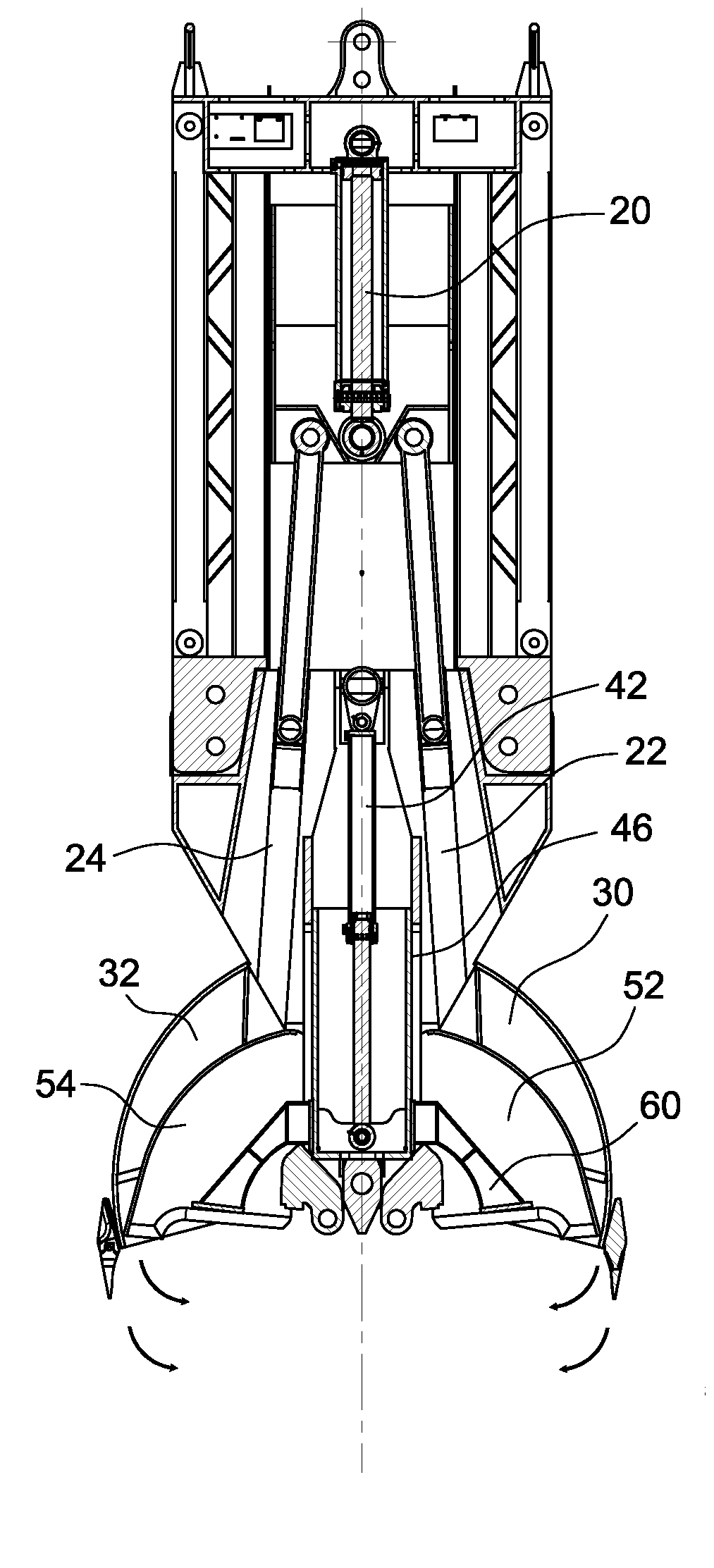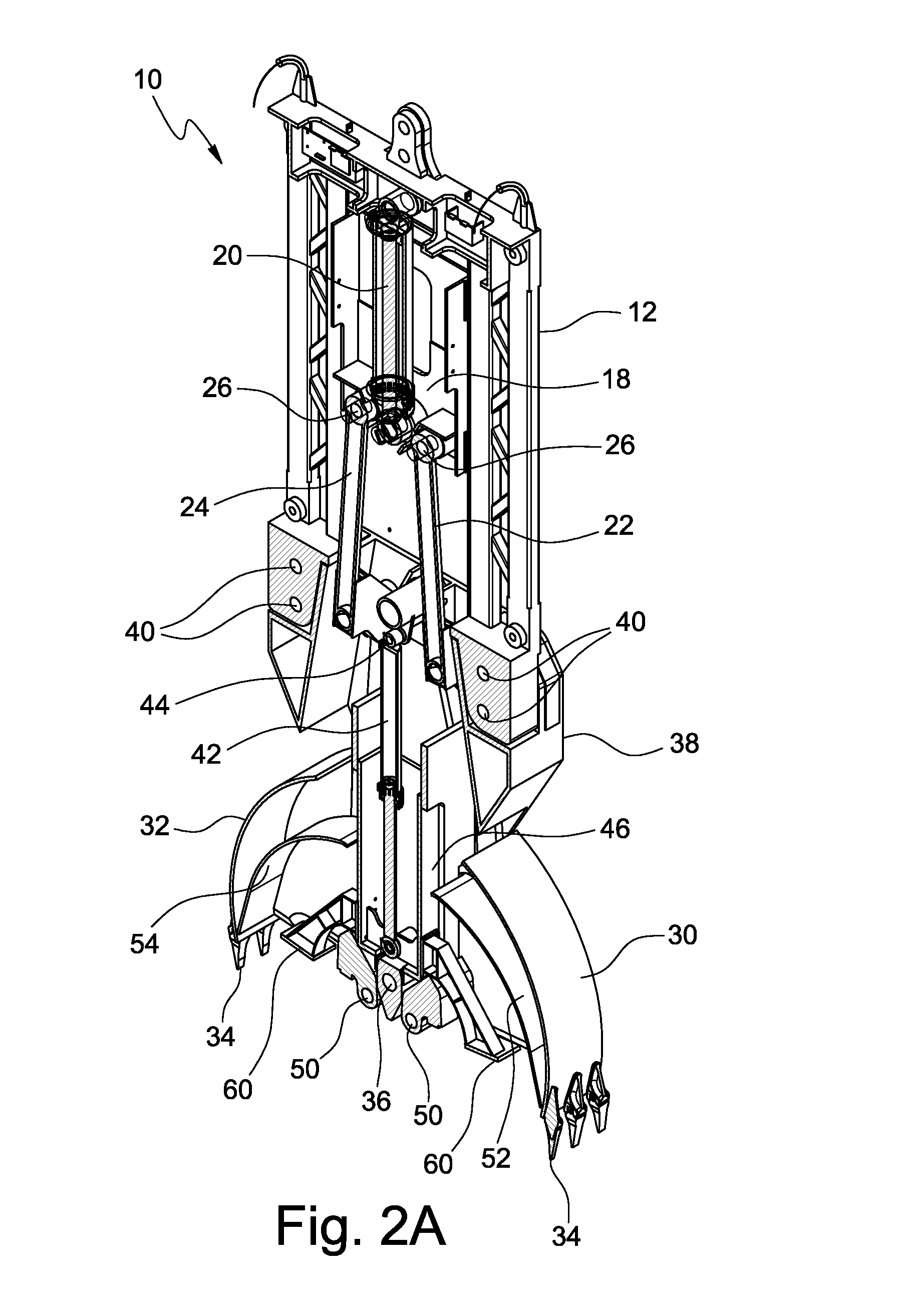Device for digging diaphragms
a diaphragm and bucket technology, applied in the field of clamshell bucket digging devices, can solve the problems of reducing the storage capacity of diaphragms, so as to achieve the lowest possible cost, facilitate the operation of excavation, and reduce the cost
- Summary
- Abstract
- Description
- Claims
- Application Information
AI Technical Summary
Benefits of technology
Problems solved by technology
Method used
Image
Examples
first embodiment
[0030]In the device 10 shown in FIGS. 1, 2A, 2B and 3A-3J the digging half-shells 30 and 32 are defined as “outer” half-shells. The outer half-shells 30 and 32 preferably but not necessarily have a common rotation axis 36 made on a half-shell support body 38 able to be temporarily fixed in a static manner, with removable means such as for example screws or pins 40, in the lower part of the framework 12. The half-shell support body 38 thus extends below said a framework 12 until it reaches a lower position that is close to the same depth reached by the digging teeth 34 when the outer half-shells 30 and 32 are in open position.
[0031]A second hydraulic cylinder 42, preferably fixed in its static part on the half-shell support body 38 through a pin 44, moves a second sliding trolley 46 (FIGS. 2A and 2B) guided on the structure of said a half-shell support body 38. The cylinder 42 could be connected at the top to the framework 12. The second sliding trolley 46 is provided, in its lower p...
second embodiment
[0049]In the device 10 shown in FIGS. 4, 5 and 6A-6H the digging half-shells 130 and 132 necessarily have distinct rotation axes, made on the half-shell support body 138 and represented by the respective pins 136A and 136B. The half-shell support body 138 is again fixed in a static manner, with screws or pins 140, in the lower part of the framework 12. The half-shell support body 138 thus extends beneath such a framework 12.
[0050]The second hydraulic cylinder 142, fixed in its static part on the half-shell support body 138 through a pin 144, moves the second sliding trolley 146 guided on the structure of said a half-shell support body 138. The second sliding trolley 146 is provided, on its side walls, with two attachment protuberances 162 on which, through upper pins 164, two further connecting rods 166 are hinged. Two mechanisms 168 and 170 with compass structure with the arms open at a slightly acute angle, otherwise known as “bolts”, are hinged on the pins 136A and 136B about whi...
PUM
 Login to View More
Login to View More Abstract
Description
Claims
Application Information
 Login to View More
Login to View More - R&D
- Intellectual Property
- Life Sciences
- Materials
- Tech Scout
- Unparalleled Data Quality
- Higher Quality Content
- 60% Fewer Hallucinations
Browse by: Latest US Patents, China's latest patents, Technical Efficacy Thesaurus, Application Domain, Technology Topic, Popular Technical Reports.
© 2025 PatSnap. All rights reserved.Legal|Privacy policy|Modern Slavery Act Transparency Statement|Sitemap|About US| Contact US: help@patsnap.com



